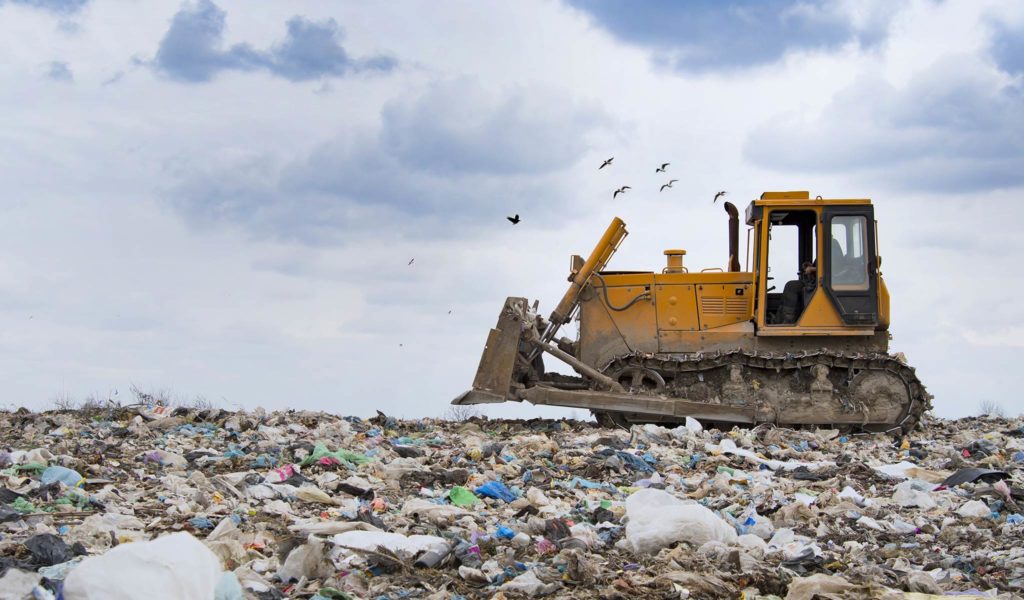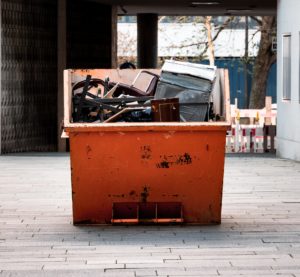
Landfills are still a major component of waste disposal systems in the United States, with half of all municipal solid waste (trash from homes and businesses) ending up there. That’s about 146 million tons of garbage being buried in the ground or piled in open sites every single year.
Landfills can cause serious environmental and social problems, and the simple fact is that we must all look towards taking this type of unsustainable waste management out of the equation. To find out how this might look, let’s first explore how a modern landfill works, why they can be problematic, and what some of the solutions could be.
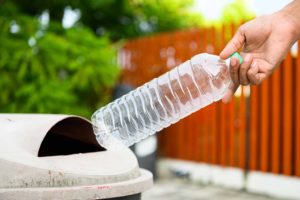
What is a landfill in the United States?
There are three main types of landfills in the US. First, Hazardous Waste Landfills, which are specialist facilities for the disposal of hazardous waste and do not deal with solid waste. Second, there are Industrial Waste Landfills, which deal with things such as Construction and Demolition (C&D) waste as well as other non-hazardous industrial waste.
Finally, there are Municipal Solid Waste Landfills (MSWs), which deal with household waste (i.e. what most people consider to be “trash”). When people talk about landfills, it is almost always Municipal Solid Waste Landfills, which is what we will be focussing on here, and what will be referred to as “landfill” throughout.
How do landfills work in the US?
According to the EPA’s latest figures from 2009, there are almost 2,000 Municipal Solid Waste Landfills in the continental United States. Along with incineration, they are the only way to dispose of many of the types of waste created in homes and businesses – but how exactly do modern landfills work?
The waste journey to landfill
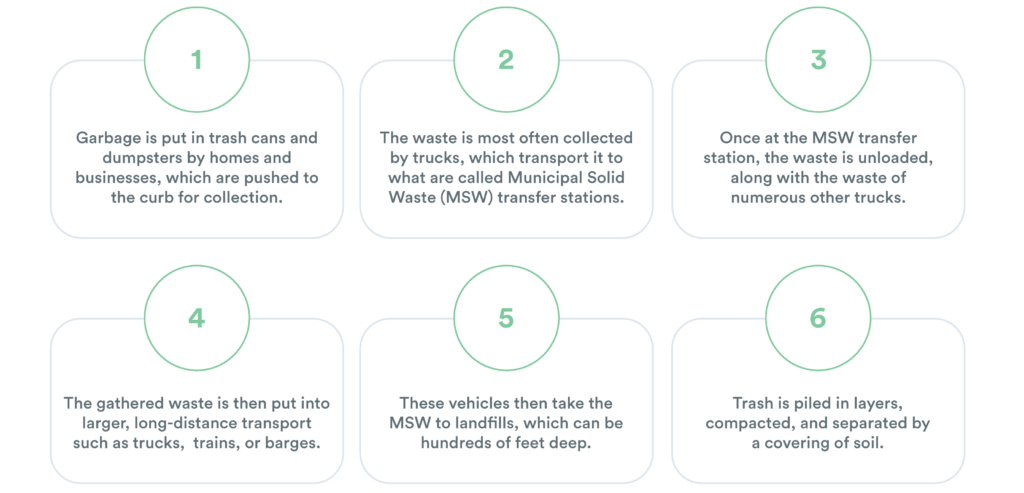
This continues until the landfill is full, at which point it is capped with plastic, a covering of soil, and some vegetation. It is then monitored for 30 years to try to ensure there is no contamination.
While in essence, they are still just holes in the ground, modern landfills are now governed by strict state and federal rules. This means that landfills all generally have these same federally mandated elements:
- A suitable location – Landfills must be clear of features that could lead to leaks such as geological faults, wetlands, and flood plains.
- A lining – Modern landfills are required to have a composite liner, made up of a flexible membrane covering two feet of compacted clay soil, on the bottom and sides of the excavation. This is to minimize leachate releases (water contaminated by the decomposing materials).
- Operational protocols – Landfills must include certain operations, such as covering and compacting garbage, to reduce space usage, odor, and vermin.
- Leachate removal – Modern landfills must also have a system in place to collect and remove leachate, which is then treated or disposed of.
- Groundwater monitoring – Landfills are required to sink wells to determine if there is contamination from the waste.
- Closure requirements – Landfills must be capped once full and then covered with soil able to accommodate native vegetation.
- Post-closure care requirements – There are requirements for the ongoing monitoring and maintenance of closed landfills.
- Financial assurance – Landfill operators must demonstrate they are able to pay for the running of and post-closure care of their landfills.
Despite the stringent legislation surrounding landfills, they are still inherently problematic from a sustainable waste management perspective.
The problems with landfills in the US
The USEPA concluded more than thirty years ago that all landfills will eventually leak into the environment. Despite all the precautions taken, linings break down and pumps stop running, meaning that leachate will enter American waterways and cause environmental damage.

Source: fastcompany.com
What’s worse, this isn’t a problem of the future. Even landfills that are still operating are liable to some level of leakage, with studies putting this figure at somewhere between 0.2 and 10 gallons of leachate per day from composite liners.
While the groundwater testing requirements are supposed to find these leaks, there is very little to do about them since landfills can’t be retrofitted with new liners. Moreover, landfill operators are often criticized for not responding even if these groundwater monitoring wells do flag issues.
Furthermore, even when landfills are running “correctly,” they can still cause major problems. The main one being methane, which is produced as organic materials break down in the landfill. Methane is a potent greenhouse gas, which can be up to 36 times more effective at trapping heat in the atmosphere than CO2, over a 100-year period.
Because of how landfills work, they are the third-largest source of human-related methane emissions in the US. The methane emissions from US landfills in 2019 alone equate to more than 21.6 million passenger vehicles driven for one year. While some landfills do, as mentioned above, capture this methane and put it to use, far more is left to leak into the air.
At the end of the day, there is no such thing as a good landfill, however modern its equipment and thick its clay walls. In which case, what are the alternatives?
The alternatives to landfills in the US
The most effective way to phase out landfills is to stop waste from being produced in the first place. This means focussing on reduction, as opposed to treatment. The clearest path towards this goal is through a commitment to zero waste.
Zero waste is, according to the Zero Waste International Alliance (ZWIA):
“The conservation of all resources by means of responsible production, consumption, reuse, and recovery of products, packaging, and materials without burning and with no discharges to land, water, or air that threaten the environment or human health.”
Whilst it may seem like a lofty goal, there are already policies being implemented on a state and city level. What’s more, both individuals and businesses are already adjusting their day-to-day actions to tackle the problems of landfills.
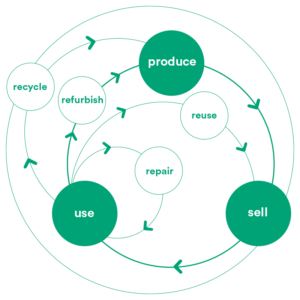
Source: rts.com
Zero waste is part of the broader shift towards a more circular economy. Our current industrial economy is based on a linear model, where products are created, sold, used, and disposed of. This is how landfills work—as the end-of-life receptacle of this linear approach.
A circular economy, on the other hand, attempts to keep materials and goods within the system for as long as possible. This starts with the more mindful production of goods, which are then sold, repaired, reused, refurbished, and in the end recycled into their constituent parts—i.e. not simply thrown in the garbage.
A circular economy keeps materials in use, which means out of landfills, and as this approach is adopted in the US, the need for landfills will decline, along with the problems they create.
For more information on e-waste and dealing with it as a business, contact one of our TRUE Advisors today. Additionally, subscribe to the RTS blog for more news and insights on waste management and sustainability.

